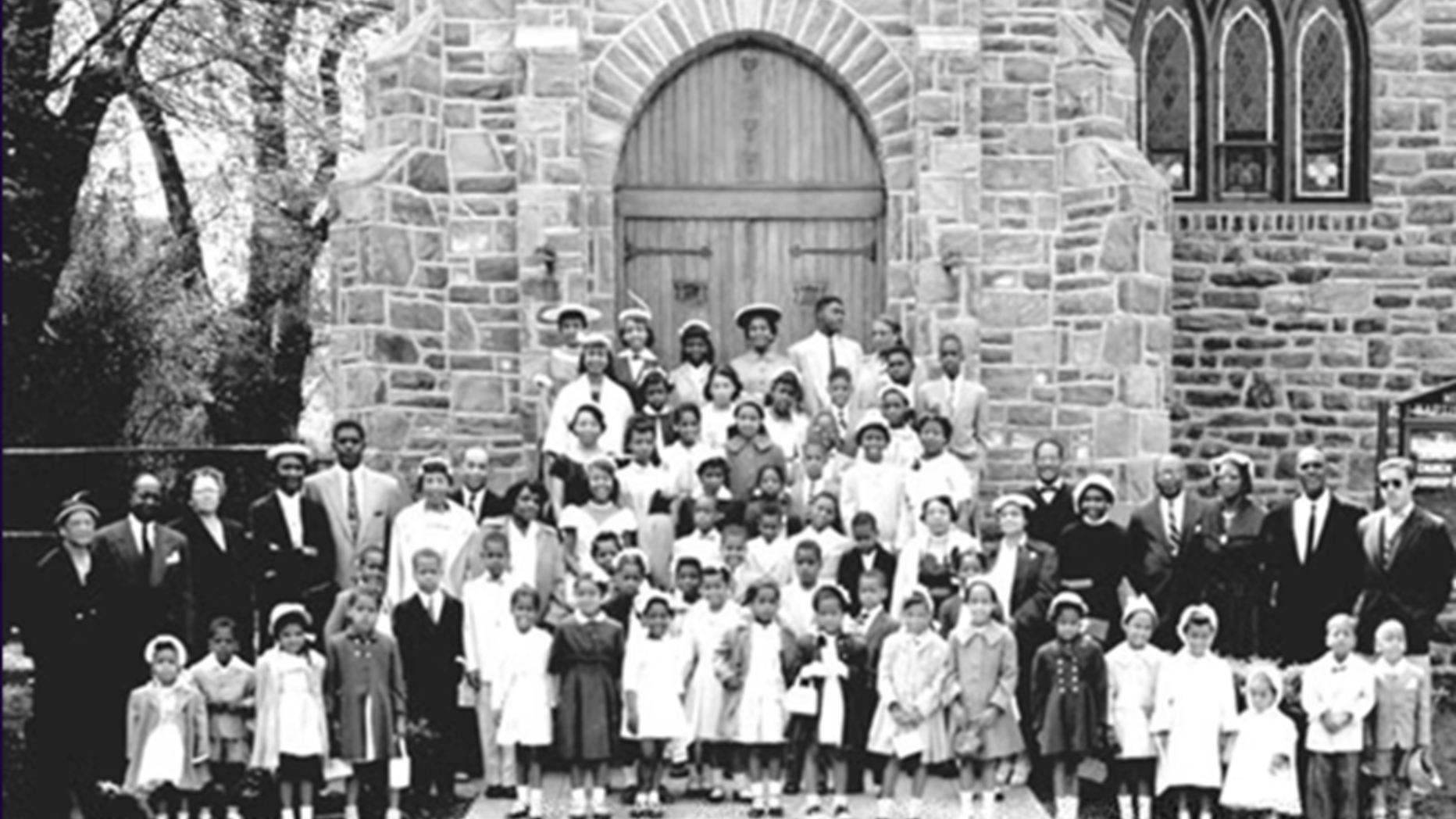Dienabou Barry | The Lower Merion Conservancy
Lower Merion Township, PA

A photograph of the Mount Calvary Baptist Church Congregation during the early 20th century
Stuart Weitzman School of Design
102 Meyerson Hall
210 South 34th Street
Philadelphia, PA 19104

A photograph of the Mount Calvary Baptist Church Congregation during the early 20th century
This summer, I had the opportunity of working with The Lower Merion Conservancy (LMC) as an intern, where my primary responsibility was to write and submit Determination of Eligibility (DOE) forms for five historically Black churches in Lower Merion Township. These churches are: Zion Baptist Church of Ardmore, Mount Calvary Baptist Church, Saints Memorial Baptist Church, Bethel African Methodist Episcopal Church of Ardmore, and Bethel African Methodist Episcopal Church of Bryn Mawr. Each of these churches has played a foundational and enduring role in the development of the Black community in Lower Merion Township. Their leadership and congregations not only worked to ensure the prosperity of Black residents and businesses but also responded to broader national challenges such as the Great Migration, the Great Depression, and the Civil Rights Movement. A major focus of my work was exploring how Black residents and businesses navigated these historical moments, with the churches serving as vital anchors in the community.
Under the supervision of Kathleen Abplanalp, LMC’s Director of Historic Preservation, I conducted research on each of the churches, including analyzing historic newspaper articles that detailed the architectural, cultural, and social history of the churches. Beyond the archives, some of the most meaningful parts of the internship came from my site visits, where I connected directly with pastors, reverends, archivists, congregants, and community members of Lower Merion. These conversations were invaluable, not only for the insight they provided into the churches’ histories, but also for the generosity and warmth with which people shared their stories. This made the work feel deeply collaborative, and it gave me a much fuller appreciation of how central these churches have been to community life. This was an interfaith experience for me that was eye-opening and enriching. It allowed me to see more broadly how Black churches function within communities.
My supervisor and I met weekly to review progress, and I found those meetings very supportive. Together, we worked to complete and submit each DOE through the Pennsylvania Historical and Museum Commission’s online platform, PAShare. Knowing that the ultimate goal of this work was to ensure the recognition and preservation of the churches’ historical and cultural significance made the process even more meaningful. I was also able to bring my coursework from my first year in the historic preservation program directly into this internship. Documentation, Research, and Recording (HSPV 6000) was very helpful, as the experience of working with the Philadelphia Historical Commission’s Historic Building Nomination Form prepared me for the structure and requirements of the DOE. Likewise, Public History: Theory and Practice (HSPV 5340) sharpened my ability to think critically during site visits. That course guided me in what kinds of questions to ask and which details to observe during site visits. My work as a research assistant also came into play because of the newspaper-based urban renewal research that was done, which closely paralleled the archival research I conducted for this project.
This internship truly allowed me to sharpen and expand my skills as a preservationist. I became more confident in conducting archival research, particularly through analyzing historic newspapers and integrating those findings into the DOE forms. I also improved on my architectural documentation by drafting site plans for each church. My writing and organizational skills developed as I worked to translate complex histories into clear, comprehensive DOE submissions. Most importantly, I strengthened my ability to communicate with community members and incorporate multiple perspectives into preservation work. These improvements not only made the internship fulfilling but also prepared me to approach future projects with greater skill, care and confidence.